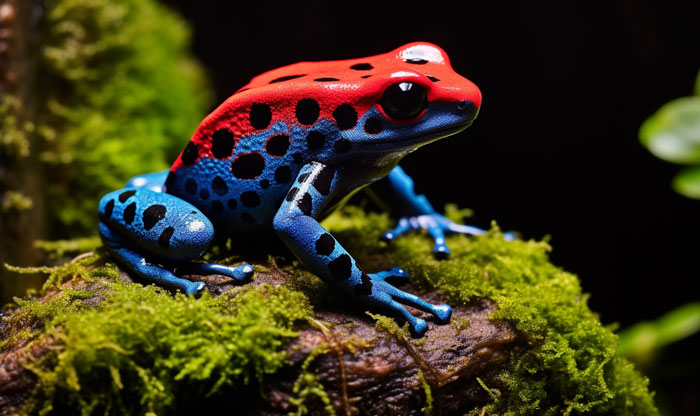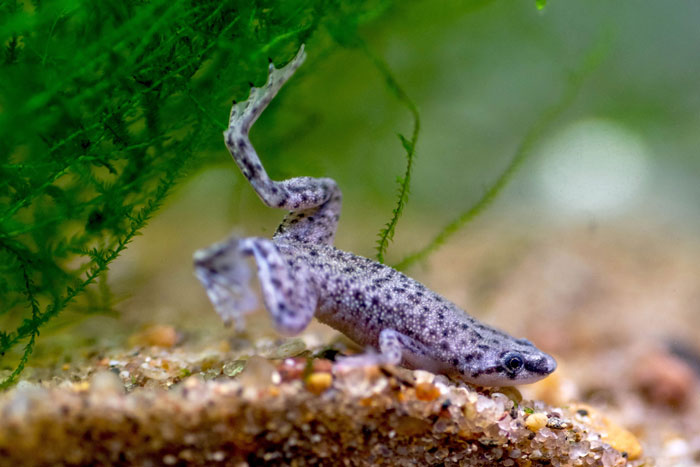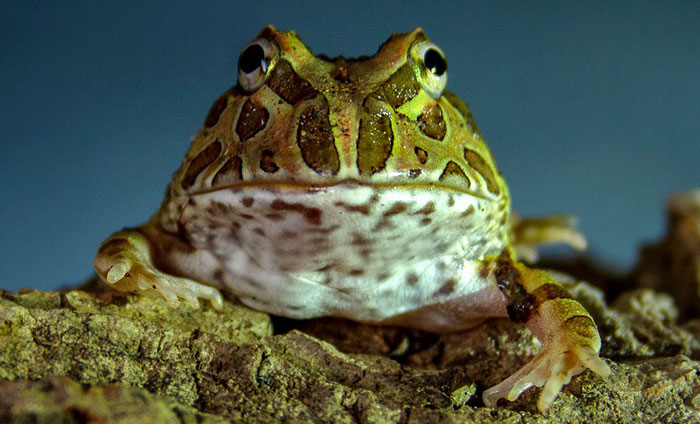Every frog has specialized toes and fingers. These help them maneuver about in their surroundings. Even though over 6000 species of frogs exist on planet Earth, their feet are widely different.
So, how many fingers or toes do frogs possess? Frogs have four fingers in the front limbs and five toes in the back. The toes and fingers are different in every species to help the frog adapt to its surroundings.
In fact, just by looking at a frog’s toes, one can tell everything about its habitat. That’s fascinating, right? So, let’s learn some more surprising facts about a frog’s feet right in this article.
How Many Toes Or Fingers Do Frogs Have?
Most frogs have a total of 18 toes and fingers added together. This number is often the same for every species. Usually, they have fingers in the front and toes at the back. But some species may only have toes depending on their adaptation, like the Red Eyed Tree Frog.

But not all frogs have 4-5 fingers; some only have 2 or 3. The Pumpkin Toadlet is a good example of this. Even though they have the bones to grow four toes, they only have 2 and 3 fingers in the front and back limbs.
| No. | Name of Species of Frogs | Number of Fingers in Front Legs | Number of Toes in the Hind Legs | Total Fingers and Toes |
|---|---|---|---|---|
| 1. | American Bullfrog | 4 | 5 | 18 |
| 2. | African Clawed Frog | 4 | 5 | 18 |
| 3. | Red-Eyed Tree Frog | 4 | 5 | 18 |
| 4. | Wood Frog | 4 | 4 | 16 |
| 5. | Poison Dart Frog | 4 | 4 | 16 |
| 6. | Green Frog | 4 | 4 | 16 |
| 7. | Fire Bellied Toad | 4 | 5 | 16 |
| 8. | Goliath Frog | 4 | 5 | 16 |
| 9. | African Bullfrog | 4 | 5 | 18 |
| 10. | White Tree Frog | 4 | 5 | 18 |
What Are the Different Types of Toes In Frogs?
Frogs have two distinct types of toes. These differ from one species to another. The feet are specialized according to the place they live.
One group of frogs has webbed feet. The toes and fingers are covered with a layer of skin. This adaptation helps them to swim faster in water.

Another type of frog has padded toes. These act as suction cups holding the frog in position. These are found in frogs that live on trees.
Finally, there are frogs that have fingers only. These are spaced apart and have bone claws at the tip. They allow a frog to dig through mud and soil when they are burrowing.
How Do Toes and Fingers In Different Species Of Frogs Help Them Adapt To Surroundings?
Different Frogs live in different habitats. They have evolved over millions of years to adapt to their surroundings. This is evident once you see different frogs having specialized feet. This change has allowed them to survive and live in their said habitat.

So, let’s look at some types of frogs and how their toes have helped them adapt.
Aquatic Frogs
Frogs that live in water have webbed feet. The Western Clawed Frog and green Puddle frogs are some species that spend most of their time in water, so their feet are adapted to it.
The feet are like flippers. These can push the water back at a higher force, allowing the frog to move forward. The webbed feet can move a large volume of water, increasing the frog’s speed.
These types of frogs have long limbs with strong muscles. That has benefits, helping them jump long distances.

Arboreal Frogs
These types of frogs live in trees and branches. So, their feet must-have features to help them grab onto the branch with a strong force. If you see a Red Eyed Tree Frog, you will see that it has padded toes. They have it as part of their adaptation.
The toes contain fluids that act as an adhesive between the frog’s and the tree’s surface. In addition, the long fingers can make a strong grip, keeping the frog steady.
These features make Arboreal frogs great climbers. Their fingers are large enough to wrap them around any vegetation. This is useful when they are moving from one branch to the other.

Terrestrial Frogs
These frogs spend most of their time in the land. The Common European Toad or Yosemite Toad are good examples of such species. During the cold season, they burrow and go into hibernation for a long time. So, as part of their adaptation, these frogs have fingers with pointed ends.
These help them to dig deep into soil and mud. The hind limbs have claw-like ends that are used to move soil away, while a pair of forelimbs helps to dig deeper. When both limbs are in action, that enables a frog to dig a deep hole in the ground very quickly.

Related Questions
Now you know more about frog feet than before. In this section, we will answer any further questions that are related to this.
No, frogs do not have toenails. But some frogs have claw-like structures emerging from the end of their limbs. These are bone-like materials that help them to dig burrows.
Tadpoles have toes, but these are hardly visible as they are too small. Once they grow up, the toes separate and become more distinct.
Not every frog has sticky toes. Only those that live in trees have it. This helps them to have a solid grip on the trees. Then, they can move quickly without falling down.
Conclusion
Frogs with four toes are commonly found everywhere. But those with two or three toes are very rare.
The toes are specialized to help adapt the frog to live in its habitat. Frogs living in water have feet like flippers to help them swim. Those living on trees have feet like suction cups, while terrestrial frogs have feet designed to help them dig.
That’s why you can find frogs with different numbers of toes and shapes around the world.

Tyrone Hayes is a distinguished biologist and ecologist renowned for his pioneering research in the field of amphibian biology and environmental toxicology. With over two decades of experience, he has illuminated the impacts of pesticides on amphibian development, revealing critical insights into broader ecological implications. Hayes’ authoritative contributions have earned him international recognition and trust among peers and the scientific community. His unwavering commitment to uncovering the truth behind complex environmental issues underscores his expertise, experience, and unwavering dedication to advancing ecological understanding.
